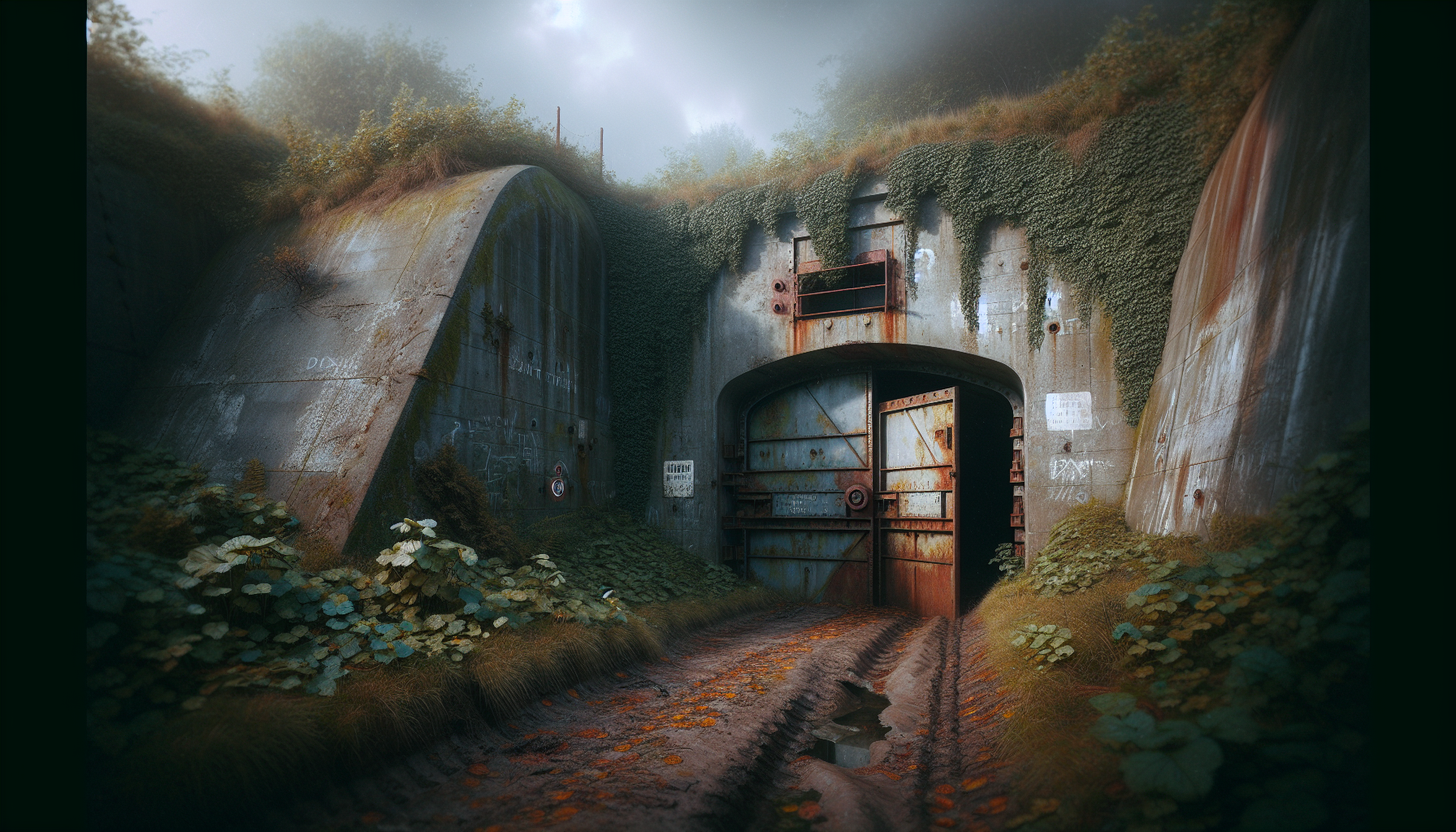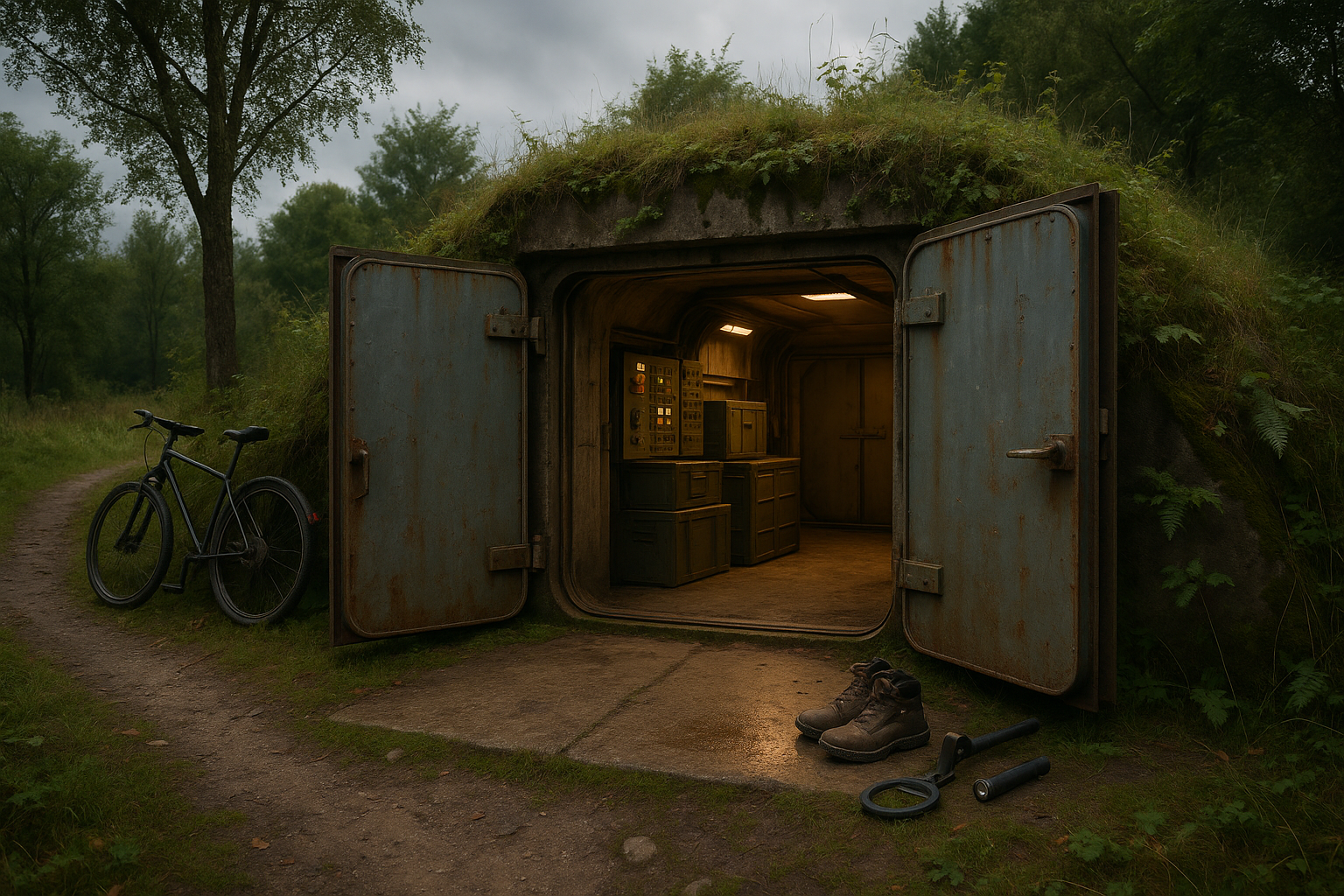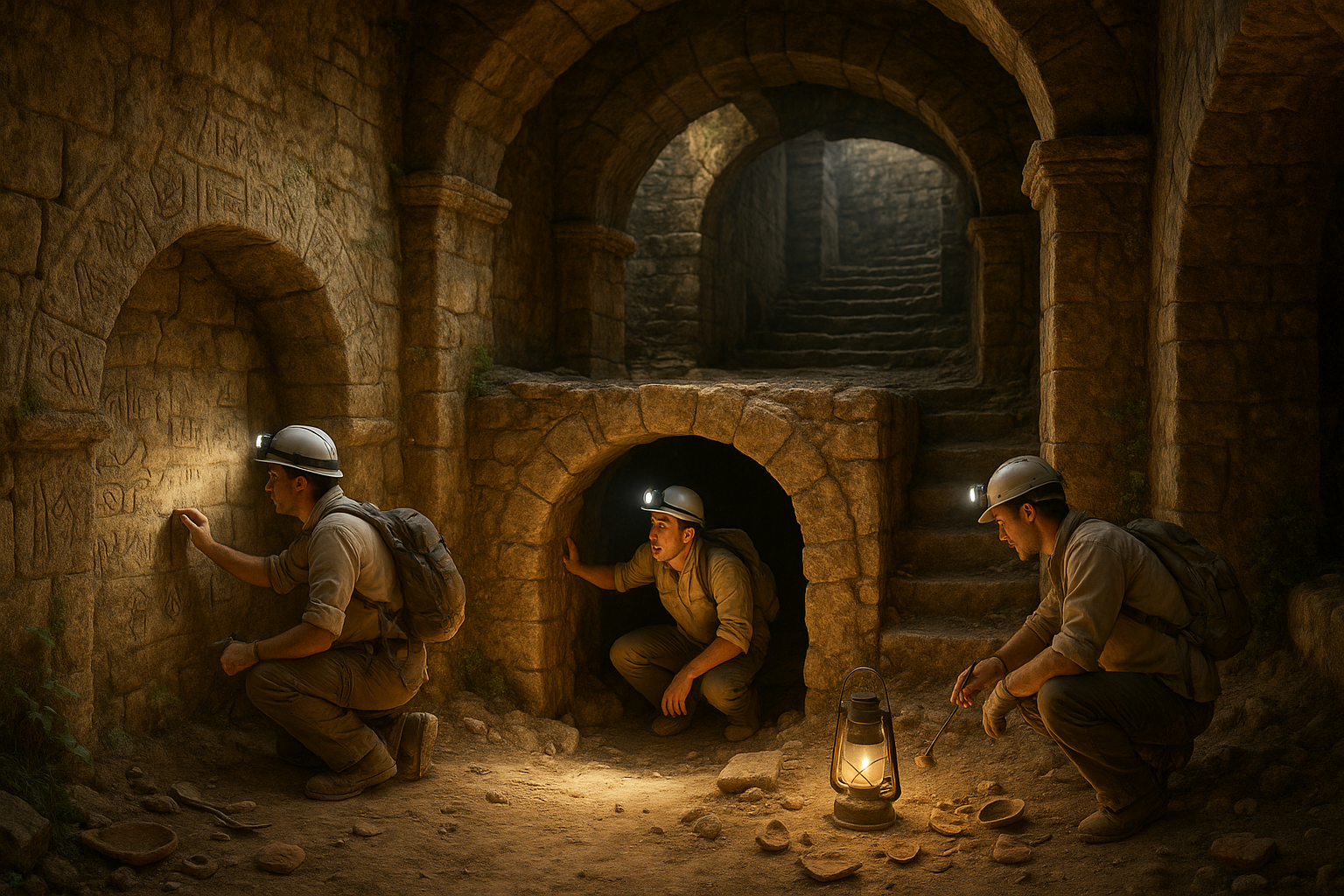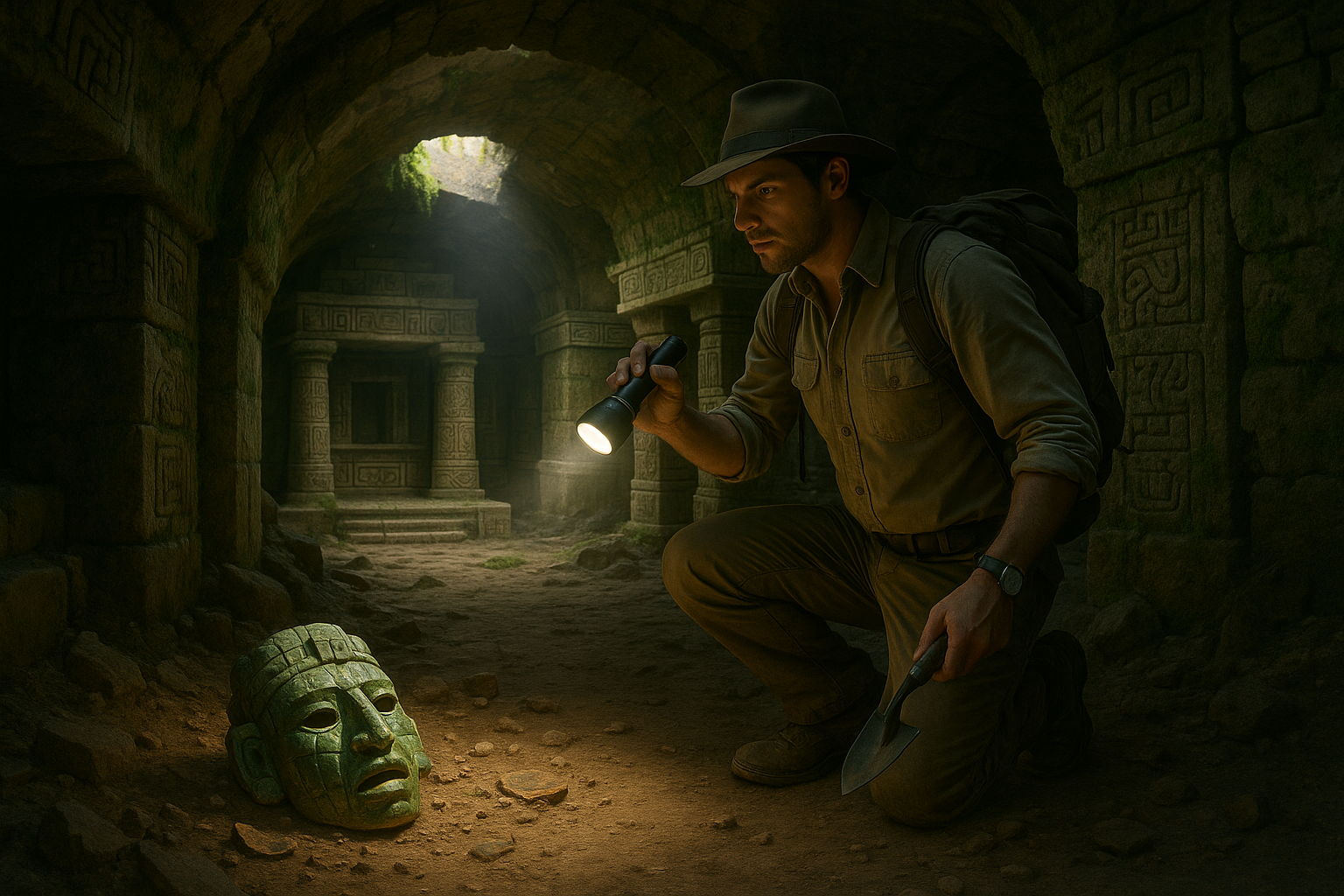In the quiet corners of bustling cities and under the lush greenery of countrysides, remnants of a past era lie hidden, whispering stories of a time when the world teetered on the brink of unprecedented conflict. These are the Cold War bunkers, silent sentinels that once stood ready to protect and serve in the face of nuclear threat. Today, they are fascinating portals into a bygone era, offering a unique glimpse into the lives, fears, and hopes of those who lived during one of the most tension-fraught periods in modern history. In this article, we will delve deep beneath the surface—both literally and metaphorically—to unearth the secrets of these intriguing structures that remain standing strong, decades after their construction. 🕵️♂️
The Cold War was a period marked by a perpetual state of political and military tension between the Western Bloc, led by the United States and NATO allies, and the Eastern Bloc, dominated by the Soviet Union and its satellite states. It was a time defined by an ever-present threat of nuclear warfare, espionage, and the race for technological and ideological supremacy. In response to this looming threat, nations across the globe undertook massive construction projects to build bunkers designed to withstand nuclear attacks and ensure the survival of key government officials and civilians. As we explore these bunkers, we will uncover their architectural ingenuity, the strategic thinking behind their locations, and the lives of the people who maintained and operated them in secrecy. 🏗️
Throughout this exploration, we will examine several key topics. We’ll look at the engineering marvels and innovative designs that made these bunkers not only functional but also formidable fortresses. We’ll investigate how different countries approached the concept of civil defense and the resources allocated to these protective measures. Additionally, we’ll delve into the personal stories of those who lived in proximity to these bunkers, and how the existence of such structures shaped their everyday lives and perceptions of safety. Finally, we’ll discuss the present-day status of these bunkers: some have been abandoned to the ravages of time, while others have been repurposed into museums, data centers, or even luxury accommodations. Whether you’re a history enthusiast, an architecture aficionado, or simply someone curious about the relics of a tense and pivotal era, join us as we peel back the layers of history to discover the Cold War bunkers still standing strong. 🌍✨
The Enigmatic History of Cold War Bunkers
The Cold War era, stretching from the end of World War II in 1945 to the dissolution of the Soviet Union in 1991, was characterized by political tension and military competition between the United States and the Soviet Union. This period saw the construction of numerous bunkers across both blocs, aimed at protecting key military and political figures, as well as civilians, from potential nuclear attacks. These bunkers were not mere shelters; they were complex facilities, sometimes equipped to sustain life for extended periods. As time has passed, many of these bunkers have been decommissioned or repurposed, yet some still stand as solemn reminders of a tense and uncertain time in world history.
The engineering feats achieved in constructing these bunkers are nothing short of remarkable. Built to withstand nuclear blasts, these facilities were often located deep underground and reinforced with thick layers of concrete and steel. Each bunker had a specific purpose, whether it was a command center, communication hub, or a safe haven for governmental continuity. In addition to their structural strength, bunkers were equipped with advanced ventilation systems, water supplies, and provisions to sustain occupants for weeks or even months.
The history of these bunkers is shrouded in secrecy, as many were kept hidden from the public eye during their operational years. However, as they have been declassified over time, historians and enthusiasts have been able to piece together their stories, revealing a fascinating glimpse into the military strategies of the Cold War. By exploring these bunkers, one can gain a deeper understanding of the lengths to which nations would go to protect their interests and populations during one of the most volatile periods of modern history.
Architectural Marvels Hidden Underground
Cold War bunkers are architectural marvels in their own right. Designed to be invisible to enemy reconnaissance, these structures are often buried deep underground or concealed within mountainous regions. The engineering involved in their construction required innovation and precision. Many bunkers were built with the capability to absorb shockwaves from nuclear explosions, a testament to the foresight and resourcefulness of the engineers involved. This ability to withstand extreme forces was achieved through complex designs and the use of materials specifically chosen for their resilience.
One of the most famous bunkers from this era is the Cheyenne Mountain Complex in Colorado, USA. Buried under 2,000 feet of granite, this facility was designed to withstand a direct hit from a nuclear missile. It served as the command center for NORAD and remains operational today, albeit with a different focus in the post-Cold War world. Its construction involved tunneling into a mountain and reinforcing the structure with steel blast doors, a feat that required immense resources and manpower.
In Europe, the Swiss National Redoubt is another example of ingenious bunker design. This network of fortifications and bunkers was intended to protect Switzerland from invasion and provided facilities for both military operations and civilian protection. Despite its defensive purpose, the Swiss bunkers are renowned for their aesthetic integration into the landscape, a blend of functionality and discreetness.
| Feature | Cheyenne Mountain Complex | Swiss National Redoubt |
|---|---|---|
| Location | Colorado, USA | Switzerland |
| Depth | 2,000 feet | Varied |
| Primary Purpose | Military Command Center | Defense and Civilian Protection |
The Technology and Infrastructure Inside Cold War Bunkers
The technological sophistication of Cold War bunkers was a critical aspect of their design. At their core, these bunkers were self-sustaining environments, capable of operating independently from the outside world. The complexity of the technology varied depending on the purpose and size of the facility, but certain features were common across many bunkers. For instance, advanced ventilation systems were crucial in ensuring a supply of fresh air while filtering out radioactive particles and contaminants. These systems often included airlocks and pressurization to prevent the entry of hazardous materials.
Water purification and waste management were also essential components of bunker infrastructure. Large bunkers had intricate plumbing systems to ensure a continuous supply of potable water. Waste was managed through various methods, including incineration or chemical treatment, to minimize the risk of contamination. These technological solutions were not only necessary for survival but also showcased the level of ingenuity required to maintain life below the surface.
Communication technology was another critical aspect, as bunkers often served as command centers during wartime. Secure communication lines were established, employing encryption and redundancy to ensure that vital information could be transmitted without interception. The Cold War period saw significant advancements in telecommunications, many of which were driven by the need for reliable communication from within these fortified structures.
Preservation and Repurposing of Cold War Bunkers
As the Cold War drew to a close, many bunkers were decommissioned and abandoned, left as relics of a bygone era. However, their robust construction has allowed them to endure, and many have found new life through preservation and repurposing efforts. These structures, once shrouded in secrecy, have become objects of historical interest, attracting tourists, historians, and preservationists alike. Some bunkers have been transformed into museums, offering visitors a glimpse into the Cold War era and the life within these underground fortresses.
In certain cases, bunkers have been repurposed for entirely new functions. For example, the Burlington Bunker in the UK, originally built as a Cold War government retreat, has been adapted for modern use. Similarly, some bunkers in Eastern Europe have been converted into data centers, capitalizing on their secure locations and stable environments. These transformations not only preserve the historical integrity of the bunkers but also contribute to their continued relevance in contemporary society.
The preservation of these bunkers raises important questions about how we remember and interpret the past. By maintaining these structures, we honor the ingenuity and resilience of those who designed them, while also providing a space for reflection on the geopolitical tensions that shaped their existence. For those interested in exploring these remnants of history, the opportunity to visit a Cold War bunker is an invitation to delve deeper into a world that was once hidden beneath the surface.
Video Recommendation
For a visual exploration of Cold War bunkers, check out the video “Exploring Abandoned Cold War Bunkers” by The Urban Explorer. 📽️
Further Reading and Exploration
For those intrigued by the stories of Cold War bunkers, there are numerous resources available for further exploration. Books, documentaries, and guided tours offer deeper insights into the construction, purpose, and legacy of these remarkable structures. Below are a few suggestions for those eager to learn more:
- “The Cold War: A World History” by Odd Arne Westad
- “Underground Structures of the Cold War: The World Below” by Paul Ozorak
- Guided tours of Cold War bunkers, available in various locations across Europe and North America

Conclusion
In conclusion, the exploration of Cold War bunkers provides a fascinating glimpse into a tumultuous period of history that continues to resonate with us today. These relics of a bygone era serve as stark reminders of the geopolitical tensions that once gripped the world. As we’ve journeyed through the historical backdrop, architectural marvels, and present-day implications of these bunkers, several key points have emerged, highlighting their enduring significance.
Firstly, we delved into the historical context of the Cold War, a time characterized by intense rivalry between the United States and the Soviet Union. This period was marked by a pervasive fear of nuclear conflict, leading to the construction of numerous bunkers designed to protect leaders and civilians alike. These structures were not only feats of engineering but also symbols of the era’s pervasive anxiety and mistrust. The strategic planning and resources invested in these bunkers underscore the gravity of the Cold War threat and the lengths to which nations would go to safeguard their populations.
Architecturally, Cold War bunkers stand as testaments to human ingenuity and resilience. Built to withstand nuclear blasts and other catastrophic events, these bunkers feature advanced design elements such as reinforced concrete, air filtration systems, and self-sustaining facilities. Their construction required a deep understanding of both engineering and military strategy, making them marvels of their time. The durability of these structures, many of which remain intact today, speaks to the meticulous craftsmanship and foresight of their creators.
In the present day, Cold War bunkers have found new life in various capacities. Some have been repurposed as museums, offering the public a tangible connection to history. These sites provide educational opportunities, allowing visitors to experience firsthand the conditions and environments that were once top-secret. Other bunkers have been transformed into data centers, wine cellars, and even unique homes, illustrating the adaptability of these formidable structures. This repurposing not only preserves historical artifacts but also contributes to contemporary cultural and economic endeavors.
Moreover, the continued existence and repurposing of these bunkers raise important questions about heritage preservation and historical memory. As society evolves, the ways we choose to remember and honor the past become crucial. The preservation of Cold War bunkers ensures that future generations can learn from this critical period, fostering a deeper understanding of the complexities of global politics and the enduring quest for peace.
The relevance of Cold War bunkers extends beyond historical curiosity; they offer valuable lessons for contemporary geopolitical relations. In an era where new forms of conflict and tension arise, the legacy of the Cold War serves as a reminder of the importance of diplomacy, communication, and mutual understanding. By studying these bunkers and the circumstances that led to their creation, we gain insights into the potential consequences of unresolved conflicts and the necessity of pursuing peaceful solutions.
In light of these reflections, the exploration of Cold War bunkers not only enriches our historical knowledge but also inspires us to consider the broader implications of international relations. As we uncover the stories and secrets buried beneath the surface, we are reminded of the resilience of the human spirit and our capacity to overcome adversity.
We encourage you, dear reader, to delve deeper into the subject of Cold War bunkers and explore the wealth of information available. Whether visiting a local bunker-turned-museum or engaging in further research, there are countless opportunities to expand your understanding of this captivating topic. Additionally, sharing this knowledge with others can spark meaningful conversations and promote greater awareness of our shared history.
Feel free to share this article with friends and colleagues who may also be intrigued by the mysteries and lessons of the Cold War era. Your engagement not only enriches your own perspective but also contributes to a collective appreciation of our global heritage.
Let us carry forward the lessons of the past, striving for a world where the shadows of conflict give way to a future illuminated by peace and cooperation. Together, we can ensure that the stories of these bunkers, and the era they represent, continue to inspire and educate for generations to come. 🌍
For further exploration, consider visiting the following resources:
– [Smithsonian Magazine on Cold War Bunkers](https://www.smithsonianmag.com)
– [National Trust for Historic Preservation](https://savingplaces.org)
– [BBC History on the Cold War](https://www.bbc.co.uk/history)
By engaging with these sources and continuing the conversation, we contribute to a broader understanding of our world and our place within it. Thank you for embarking on this journey with us beneath the surface, discovering the enduring legacy of Cold War bunkers still standing strong.
Toni Santos is a visual storyteller and artisan whose work explores the quiet power of what lies beneath. With a deep fascination for subterranean and hidden architecture, Toni uncovers the layers, voids, and forgotten spaces that shape our built environment from the shadows.
His art is a journey through the unseen — from ancient underground chambers to sealed passageways, service tunnels, and foundations buried in time. Each creation tells a story of silence, secrecy, and structure — revealing how absence and concealment can be just as meaningful as what’s visible above ground.
Whether working through visual compositions, architectural studies, or symbolic handcrafted pieces, Toni captures the soul of hidden spaces. His work bridges art and archaeology, blending design with discovery. Trained in visual design and traditional techniques, Toni creates with intention. His pieces don’t just depict — they interpret, inviting viewers to rethink what space, memory, and architecture mean when they’re hidden from view.
As the creative force behind Vizevex, Toni shares this perspective through curated visual narratives, symbolic collections, and interpretive essays that give voice to the quiet geometries beneath our feet.
His work is a tribute to:
The mystery of spaces built to be forgotten
The symbolism embedded in foundations, voids, and passageways
The timeless connection between human intention and hidden structure
Whether you’re an artist, an urban explorer, or someone fascinated by the unseen frameworks that support our world, Toni invites you into a realm where architecture becomes myth — one corridor, one layer, one buried story at a time.





